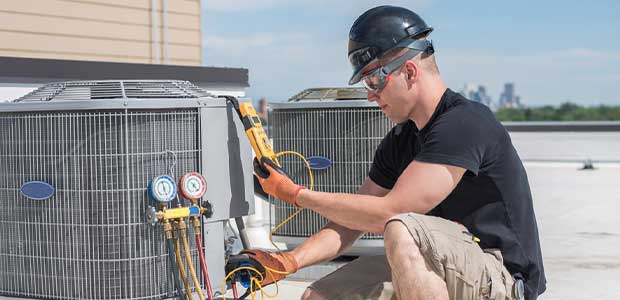
What HVAC Workers Need to Know About OSHA
- By Jane Marsh
- Aug 09, 2021
On December 29, 1970, then-President Richard Nixon signed the Occupational Safety and Health Act. Four months later, on April 28, 1971, it went into effect, slowly becoming the gold standard for workplace safety today. 2021 marks the 50th anniversary of the act going into effect and it is still the primary thing that we turn to when safety is a concern. What do Heating, Ventilation and Air Conditioning workers need to know about OSHA?
Risks for HVAC Workers
OSHA, in addition to providing guidelines for worker safety, also helps outline the kind of risks that an employee might be exposed to in the workplace. For HVAC workers, in particular, this includes risks such as:
● Handing refrigerants
● Operating on rooftops
● Dealing with wiring and electricity
● Working in confined spaces
This is by no means an exhaustive list, but it does detail some of the most common risk factors for HVAC workers that OSHA addresses. How does the Occupational Safety and Health Act protect HVAC workers?
Refrigerant Safety
The primary safety concern when working with refrigerants is oxygen deprivation. The substance will replace the oxygen in the lungs. They are difficult to expel from the lungs because they are heavier than air, leading to unconsciousness and eventually death. OSHA regulations detail how to use these refrigerants safely, how to store them and how to react if there is refrigerant exposure on the job site.
Preventing Falls
Falls are among the most common causes of on the job fatalities, especially in the construction industry. It is so common that it is included as part of OSHA’s “Fatal Four.” HVAC workers who find themselves operating on roofs are at risk of adding to those statistics. According to OSHA, fall arrest equipment is essential for anyone working above a certain height, which ranges from four to eight feet depending on the industry, or on a particular grade of roof.
Managing Confined Spaces
Working in confined spaces is part of the job description for an HVAC professional, especially when they have to install wiring and ductwork in attics, basements and crawl spaces. In addition to the challenge of working in these small spaces, there is an increased risk of carbon monoxide (CO) and carbon dioxide (CO2) exposure if the space does not have adequate ventilation.
According to the CDC, CO poisoning is directly responsible for 400 deaths and more than 20,000 emergency room visits per year. OSHA’s rules for working in these confined spaces include specifications to prevent CO and CO2 poisoning.
Electrical Safety
Installing new HVAC units or repairing existing ones means working with electrical systems. Both present different risks, but the safety protocols for each are the same.
They may include steps from shutting off the power to the HVAC system at the building’s main breaker to testing wires to determine if any current remains or proving proper insulation and grounding in the event of an arc or shock. Electricity-related accidents might not be common enough to make it into the Fatal Four, but they are still a hazard that OSHA addresses for HVAC employees.
Staying Safe on HVAC Job Sites
As we mentioned before, this is by no means an exhaustive list. Other hazards, such as fire safety, blood-borne pathogens and machinery guarding standards, could all apply to HVAC professionals under different circumstances. The latter, for example, is a safety standard that is common for HVAC technicians working on large construction sites.
OSHA has been around for five decades as of 2021 and has evolved into the best foundational tool for keeping HVAC pros and everyone else safe while workers complete their jobs. As new techniques and technologies emerge, OSHA regulations will continue to evolve, but its primary goal, workplace safety, will remain the same as in 1971 when it first went into effect.